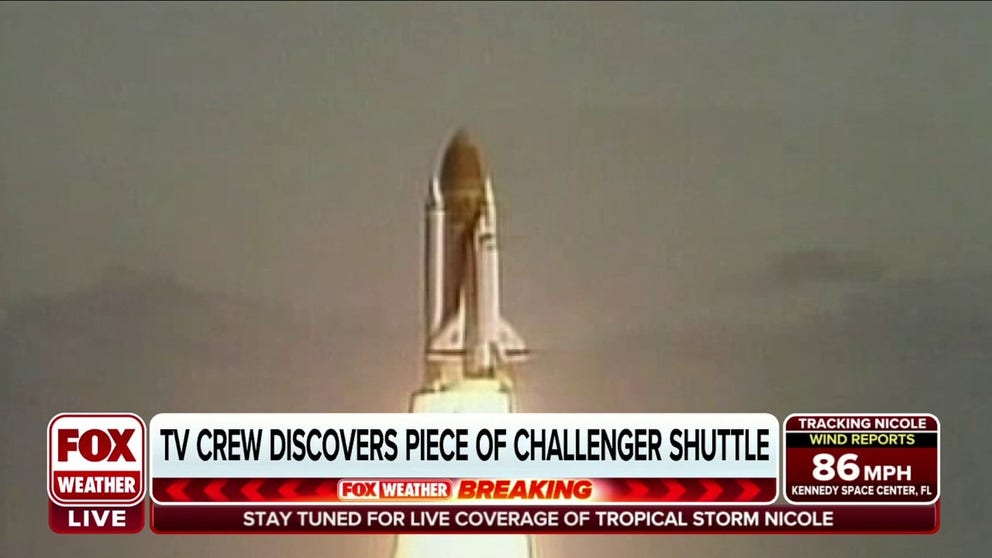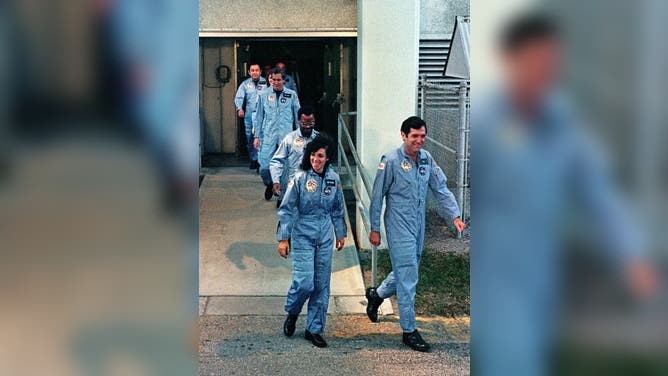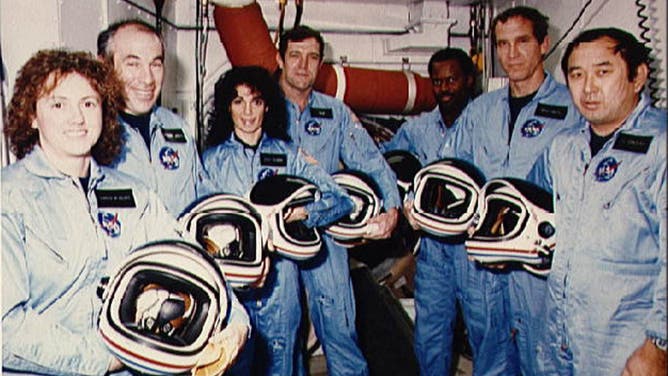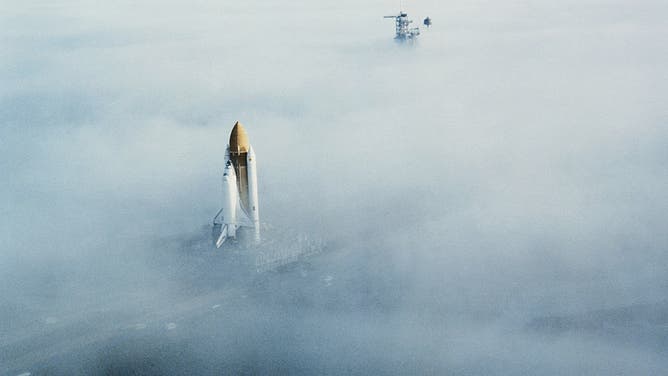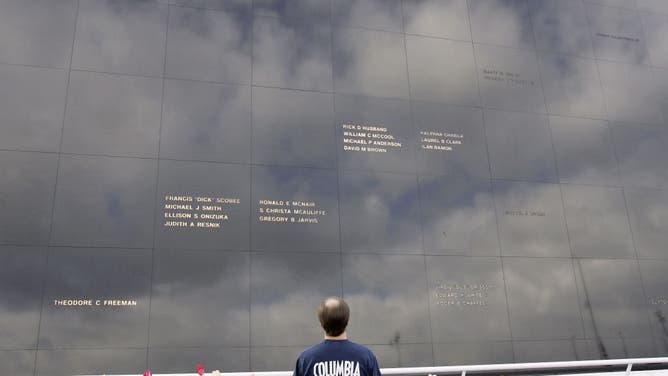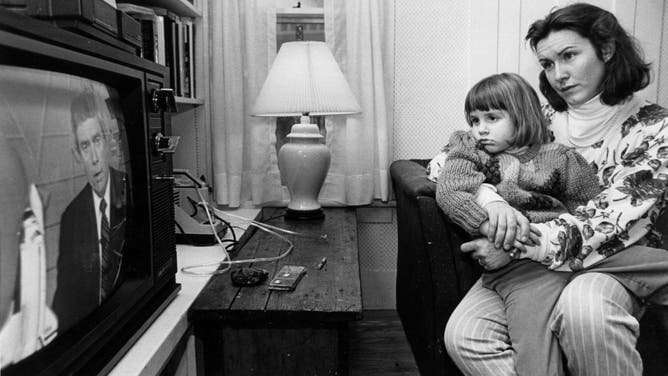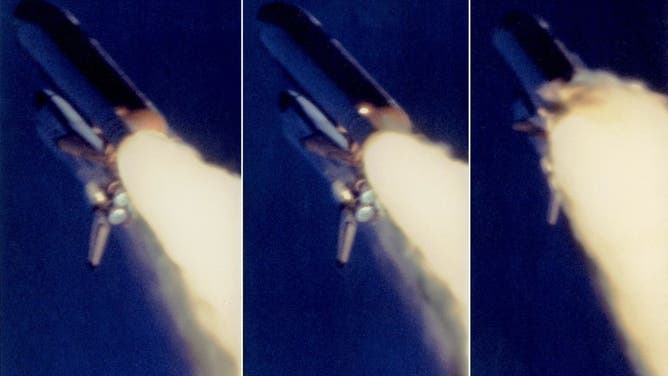Piece of Space Shuttle Challenger discovered off Florida coast 37 years later
A new discovery by a dive team from The History Channel marks the first new artifact from the Challenger wreckage found in 25 years. NASA has confirmed the piece was part of the orbiter and is deciding what actions to take to possibly recover the item from the seafloor.
Challenger space shuttle section discovered off coast of Florida
A piece of the Space Shuttle Challenger has been recovered off the coast of Florida by a television crew.
Divers have uncovered a piece of the Space Shuttle Challenger off the coast of Florida more than 37 years after seven astronauts died during the post-launch explosion.
On Jan. 28, 1986, at 11:36 a.m. Eastern time, the Space Shuttle Challenger, launched on the mission known as STS-51L from Kennedy Space Center in Florida. A little over a minute into the flight, the Challenger suffered a major malfunction caused by the cold temperatures the morning of the launch.
All seven astronauts, Francis R. "Dick" Scobee, Michael J. Smith, Ronald E. McNair, Ellison S. Onizuka, Judith A. Resnik, Gregory B. Jarvis and teacher Christa McAuliffe, were killed in the explosion.
Although dive teams and crew scoured the ocean and land, searching for debris from the launch vehicle to complete a thorough investigation of the failure, not all of the orbiter was recovered.
A discovery by a dive team from The History Channel marks the first new artifact from the wreckage found in 25 years.
In March 2022, a dive team was searching the ocean floor for a World War II aircraft wreck when they stumbled upon a 20-foot-long piece of the orbiter with some of the space shuttles' recognizable white tiles. After a second dive in May, the team presented its findings to NASA Astronaut Bruce Melnick, who suspected it was part of the Challenger.
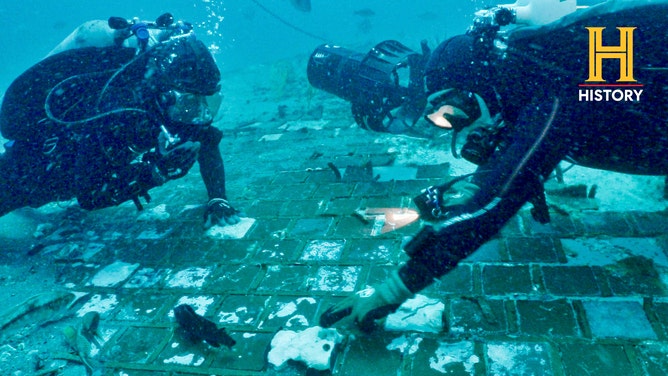
Underwater explorer and marine biologist Mike Barnette and wreck diver Jimmy Gadomski exploring a 20-foot segment of the 1986 Space Shuttle Challenger, the team discovered in the waters off the coast of Florida during the filming of The HISTORY® Channel’s new series "The Bermuda Triangle: Into Cursed Waters" premiering Tuesday, November 22 at 10 p.m. ET. (Image credit: The HISTORY Channel)
Underwater explorer Mike Bernette led the team that made the discovery.
"The significance of this large section of Challenger's structure was readily apparent," Barnette said. "We recognized the necessity of bringing this find to the immediate attention of NASA."
The dive site was outside the area known as the Bermuda Triangle off Florida's Space Coast.
NASA officials reviewed images of the piece found and confirmed it was a part of Challenger.
NASA Administrator Bill Nelson said the discovery is a reminder of the sacrifices in the name of space exploration.
"While it has been nearly 37 years since seven daring and brave explorers lost their lives aboard Challenger, this tragedy will forever be seared in the collective memory of our country. For millions around the globe, myself included, Jan. 28, 1986, still feels like yesterday," Nelson said. "This discovery gives us an opportunity to pause once again, to uplift the legacies of the seven pioneers we lost, and to reflect on how this tragedy changed us. At NASA, the core value of safety is – and must forever remain – our top priority, especially as our missions explore more of the cosmos than ever before."
By law, all space shuttle artifacts are the property of the U.S. government.
The Challenger discovery will be documented in The History Channel series "The Bermuda Triangle: Into Curse Waters," which premiers on Nov. 22.
